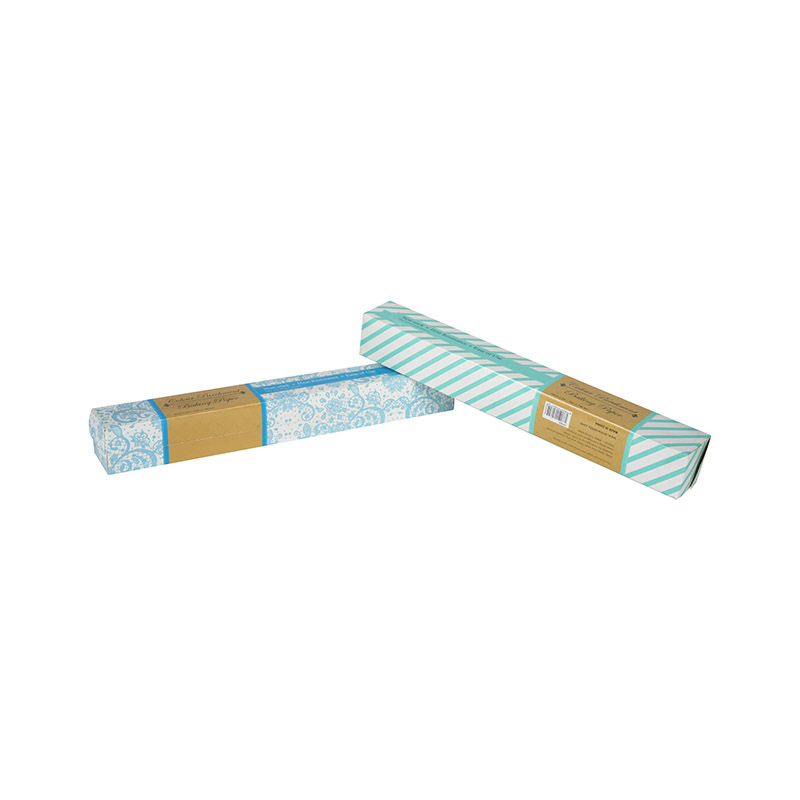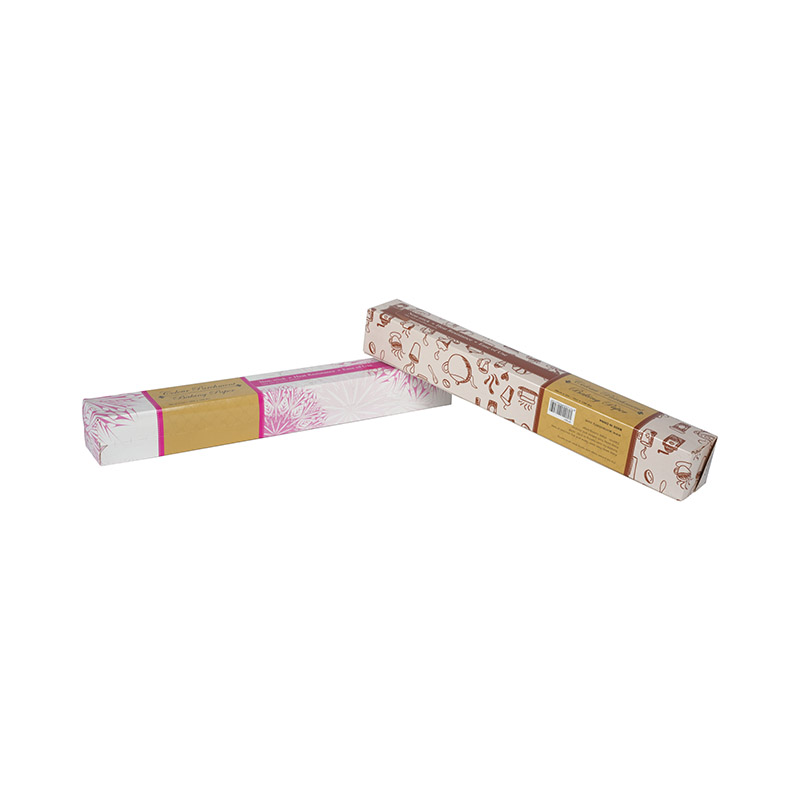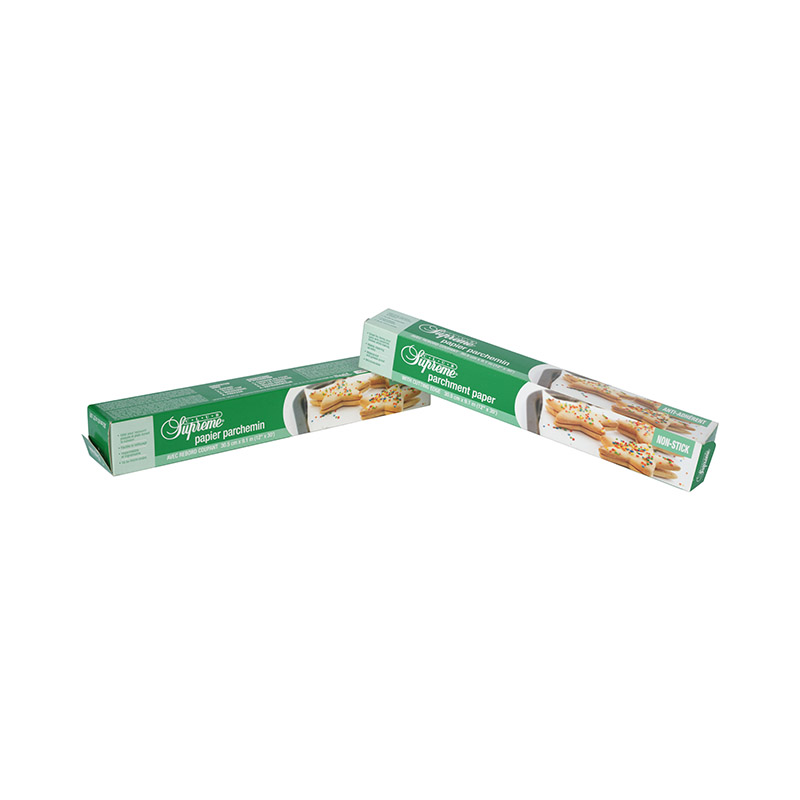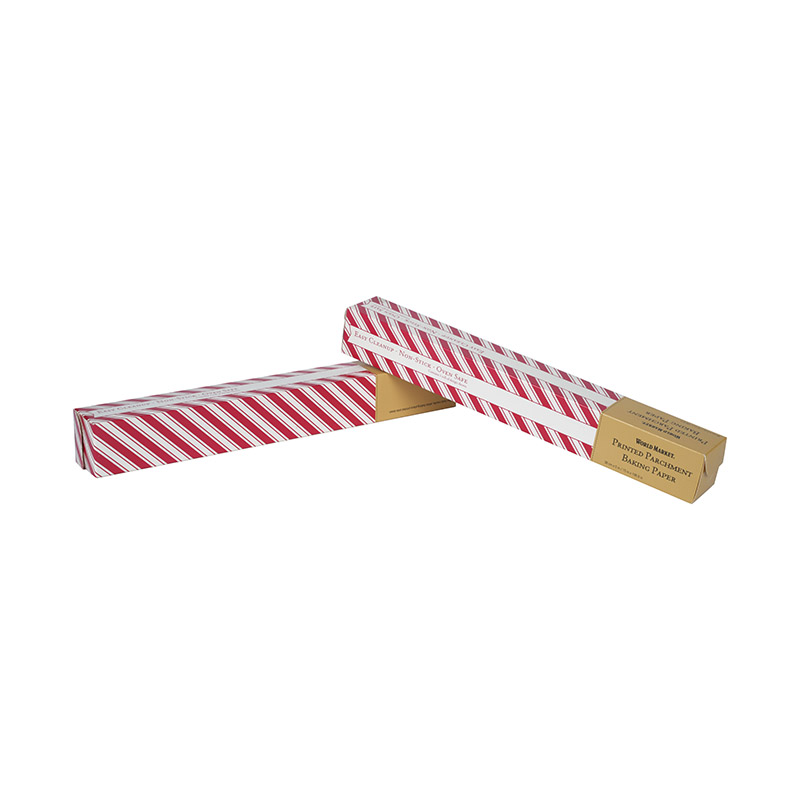The Packaging Conundrum: Necessity Meets Responsibility In the fast-paced world of grab-and-go meals, packaging is an unavoidable necessity. It protec...
READ MOREAll
Baking Paper
Greaseproof Paper
Wax Paper
Parchment Paper
Cooking Sheet Paper
Steaming Paper
Hamburger Wrap
Sandwich Wrap
Pan Liner
Candy Wrap
Air Fryer Paper

Material: 100% Virgin Wood Pulp Coating Material Silicone Coating Side Double Side Compatible Printi...

Material: 100% Virgin Wood Pulp Coating Material Silicone Coating Side Double Side Compatible Printi...

Material: 100% Virgin Wood Pulp Coating Material Silicone Coating Side Double Side Compatible Printi...

Material: 100% Virgin Wood Pulp Coating Material Silicone Coating Side Double Side Compatible Printi...
The Packaging Conundrum: Necessity Meets Responsibility In the fast-paced world of grab-and-go meals, packaging is an unavoidable necessity. It protec...
READ MOREHave you ever stopped to appreciate the simple sheet of paper that separates your juicy burger from your hands? It might seem trivial, but hamburger w...
READ MOREIn the fast-paced, high-stakes environment of a professional kitchen, every supply choice matters. From the quality of the ingredients to the efficien...
READ MOREIn the realm of professional and home kitchens alike, certain tools rise to the level of indispensable. Among these foundational items are parchment p...
READ MOREHow the closed-loop water system saves water in the production of parchment paper?
In the pursuit of sustainable manufacturing processes, the paper industry has made significant strides in adopting technologies that reduce environmental impact. One such innovation is the closed-loop water system, a pivotal development in conserving water during the production of parchment paper. This article delves into how closed-loop water systems function and their benefits in water conservation within parchment paper production facilities.
How Closed-Loop Water Systems Work in Parchment Paper Production
1. Initial Water Use: In parchment paper production, water is essential for pulping wood fibers, paper formation, and various cleaning processes. Initially, water is drawn from local sources and used in these stages.
2. Collection and Filtration: After the initial use, instead of being discarded, the water is collected and directed towards a filtration system. This system removes solid waste, pulp residues, and other contaminants, making the water reusable.
3. Treatment and Conditioning: The filtered water undergoes further treatment to adjust its chemical properties and remove any remaining impurities. This may involve biological treatment, chemical treatment, or physical processes like sedimentation and flotation.
4. Recirculation: Once treated, the water is recirculated back into the production process. It can be reused for pulping, cleaning, or other stages, maintaining a consistent quality that meets the production requirements.
Benefits of Closed-Loop Water Systems
1. Significant Water Savings: By recycling water, closed-loop systems drastically reduce the need for fresh water. This is particularly important in areas facing water scarcity, where conserving every drop is crucial. It is estimated that such systems can reduce water consumption by up to 90%.
2. Reduced Wastewater Discharge: Closed-loop systems minimize the volume of wastewater discharged into the environment. This not only reduces the strain on local water treatment facilities but also lowers the risk of contaminating natural water bodies.
3. Cost Savings: Less dependency on fresh water translates to lower water procurement costs. Additionally, reduced wastewater treatment costs can lead to significant financial savings for parchment paper producers.
4. Enhanced Regulatory Compliance: Stringent environmental regulations often require industries to minimize their water usage and wastewater discharge. Closed-loop systems help companies comply with these regulations, avoiding potential fines and enhancing their reputation as environmentally responsible businesses.
5. Improved Operational Efficiency: Recycling water within the production process can lead to more consistent water quality, improving the overall efficiency and quality of the parchment paper produced. This consistency can reduce downtime and maintenance costs associated with varying water quality.
Case Study: Implementing Closed-Loop Systems in Parchment Paper Production
Company X: A leading parchment paper manufacturer, Company X, implemented a closed-loop water system across its production facilities. Before adopting this system, the company relied heavily on fresh water sources and faced significant wastewater management challenges. Post-implementation, Company X reported a 85% reduction in fresh water usage and a 70% decrease in wastewater discharge. The financial savings and enhanced compliance with environmental regulations underscored the system's value, leading the company to invest further in sustainable technologies.
Challenges and Future Directions
While closed-loop water systems offer numerous benefits, their implementation can be challenging. Initial setup costs can be high, and ongoing maintenance is required to ensure optimal performance. Additionally, the treatment processes must be carefully managed to prevent the buildup of contaminants over time.
Looking ahead, advancements in water treatment technologies and increased awareness of water conservation's importance are expected to drive wider adoption of closed-loop systems. As the industry continues to innovate, these systems will likely become more efficient and cost-effective, further solidifying their role in sustainable parchment paper production.
The adoption of closed-loop water systems marks a significant step towards sustainable parchment paper production. By recycling and reusing water, these systems not only conserve a vital resource but also reduce environmental impact and operational costs. As more companies embrace this technology, the parchment paper industry can look forward to a greener, more sustainable future.
How silicone coating on reusable paper affects its environmental performance on parchment paper?
In the quest for more sustainable kitchen and food packaging solutions, parchment paper has become a staple, known for its non-stick and heat-resistant properties. Central to these properties is the silicone coating applied to the paper. However, as environmental concerns become more prominent, it's important to evaluate how this silicone coating impacts the overall environmental performance of parchment paper, particularly when considering reusable options.
Environmental Benefits of Silicone Coating
1. Durability and Reusability: One of the most significant environmental benefits of silicone-coated parchment paper is its durability. Unlike traditional parchment paper, which is typically single-use, silicone-coated versions can be reused multiple times. This reduces the frequency of disposal and lowers the overall consumption of paper products.
2. Reduction in Resource Use: By enabling multiple uses, silicone-coated parchment paper conserves resources that would otherwise be expended in the production of single-use alternatives. This includes reductions in water, energy, and raw materials used in the manufacturing process.
3. Non-Toxic Nature: Silicone is considered non-toxic and stable, meaning it does not release harmful chemicals into food or the environment under normal use conditions. This makes it a safer alternative to other non-stick coatings that might degrade and release hazardous substances.
Environmental Drawbacks of Silicone Coating
1. Production Footprint: The manufacturing process of silicone involves significant energy consumption and emissions. Producing silicone from silica is resource-intensive, contributing to a higher carbon footprint compared to uncoated paper.
2. End-of-Life Disposal: Silicone-coated parchment paper is not easily recyclable. The silicone layer complicates the recycling process, as it cannot be separated from the paper fibers in standard recycling facilities. This often means that used silicone-coated parchment paper ends up in landfills, where it can persist for a long time due to its stable nature.
3. Compostability Concerns: While paper itself is biodegradable and compostable, the silicone coating is not. This means that even if the paper part decomposes, the silicone may remain, potentially disrupting composting processes and contributing to microplastic pollution.
Sustainable Practices and Alternatives
1. Reusable Silicone Baking Mats: Instead of silicone-coated parchment paper, consumers can opt for reusable silicone baking mats. These mats offer similar non-stick properties and can be used hundreds of times, significantly reducing waste.
2. Compostable and Biodegradable Options: Some manufacturers are developing compostable parchment papers with plant-based coatings that offer non-stick properties without the environmental drawbacks of silicone. These alternatives can decompose fully in composting conditions, providing a more eco-friendly solution.
3. Recycling Programs: Specialized recycling programs for silicone products are emerging, though they are not yet widespread. Supporting and expanding these programs could help manage the disposal of silicone-coated paper more sustainably.
4. Conscious Usage and Disposal: Consumers can mitigate some environmental impacts by maximizing the reuse of silicone-coated parchment paper and disposing of it responsibly. Checking with local waste management facilities for proper disposal guidelines can also help reduce landfill contributions.
Silicone-coated parchment paper presents both benefits and challenges in terms of environmental performance. While its reusability and non-toxic properties offer significant advantages, the production process and end-of-life disposal pose environmental concerns. By exploring and adopting sustainable practices and alternatives, both consumers and manufacturers can help improve the environmental footprint of parchment paper. As the industry continues to innovate, the development of more eco-friendly coatings and recycling solutions will be crucial in making parchment paper a truly sustainable option for future use.